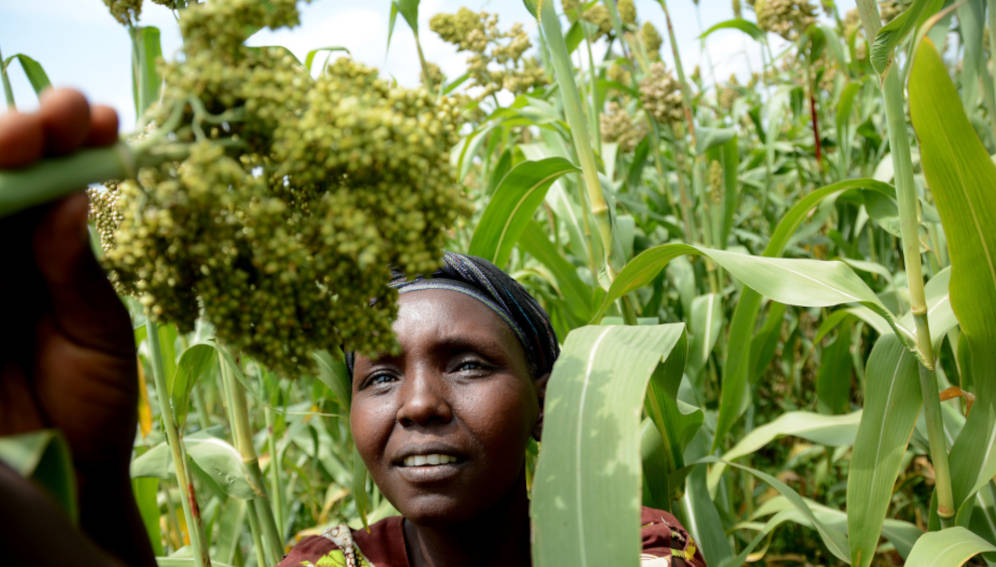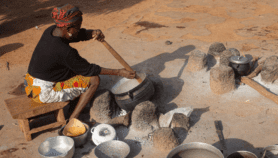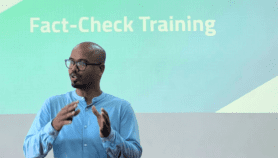07/08/23
Integrated approaches key to achieve development goals

By: Lindiwe Majele Sibanda and Claudia Sadoff
Send to a friend
The details you provide on this page will not be used to send unsolicited email, and will not be sold to a 3rd party. See privacy policy.
International institutions need to take a more integrated approach to solving the world’s problems – and need more funding – write Claudia Sadoff, executive managing director of CGIAR, and Lindiwe Majele Sibanda, chair of the group’s System Board.
French President Emmanuel Macron’s recent Summit for a New Global Financing Pact delivered a clear message: international institutions, from finance to research, are in urgent need of reform if they are to be fit-for-purpose in addressing the challenges the world faces today.
This call for reform is not new, but it is growing louder. The global development and financial architecture that addresses humanitarian and development needs, largely established following the Second World War, is showing its age. At the same time, the challenges the world faces, from conflict and climate change to biodiversity, health, and food crises, are increasingly complex and interconnected. Taken together, these factors risk putting the development goals the world has committed to out of reach.
If the political will to upgrade the world’s international institutions is there, and the need is pressing, what is holding back reform? The answer is that reforming large, intergovernmental organisations is challenging, given the complex stakeholder relationships and expectations involved. That is perhaps why many international bodies persist with structures and strategies established decades ago – even as they deliver diminishing returns for beneficiaries and funders alike.
Food insecurity
The urgent need for reform is nowhere more apparent than in the global architecture for tackling hunger and malnutrition levels, with some 735 million people facing hunger and food insecurity in 2022.
Agricultural research and innovation has always played an important part in the fight against hunger. In the 1970s, CGIAR research centres spurred the Green Revolution, which did much to avert famine in Asia, saving millions of lives. But the challenges the world faces have changed significantly.
There is a growing understanding of the interconnection between food, land, and water systems, and how these connect to climate, gender, policy, economics, among others. At CGIAR, we have recognised the need to shift away from a focus on single-commodity solutions, which have increased productivity at the expense of other elements of food systems, ecosystems, and equity and climate goals.
Today, the systems approaches that we champion, which also underpin the UN Food Systems Summit action tracks, consider all aspects of food production and consumption, from farm to fork, and their trade-offs.
These approaches underpinned the ambitious reforms that CGIAR, the world’s largest publicly funded agrifoods-focused research partnership, embarked on in 2019 in response to demand from our country and funding partners. Even before the COVID-19 pandemic and global food crisis, we recognised that, to achieve food and nutrition security, we need to transform food, land, and water systems within the context of a climate crisis, and that this can only be done in partnership with others working towards this goal.
One CGIAR
That is why we brought 12 CGIAR centres together in a partnership under a unified mission, strategy, and governance structure. While it is still early days, with much work to be done to implement the integration, we are starting to see positive results.
For instance, CGIAR’s staff of more than 9,000 people globally are working more closely across varied geographies and challenges. Our large-scale science initiatives, for example, are designed to address the need for functioning food, land, and water systems, both in specific regions and in connection to megatrends such as urbanisation and the concentration of poverty in conflict zones, as highlighted in this year’s State of Food Security and Nutrition in the World report. Enabled by this more-integrated way of working, our science is breaking ground in areas from vegetables to migration, conflict, and fragility, from urban agriculture to the circular economy.
CGIAR has long partnered with the World Food Programme (WFP) to integrate systems thinking into relief work. By combining food aid distribution with social protection programmes, we can address immediate humanitarian concerns while at the same time building longer-term resilience. The partnership also extends to the development of food security policies — for example in Colombia, picture-based insurance for smallholder farmers, with smartphone cameras used to monitor crop health, and assessing the impact of conflict and food assistance. These are concrete steps towards bridging the gap between humanitarian crisis response and building long-term resilience.
We have also embarked on more mission-driven partnerships, for instance signing an agreement last year with the African Development Bank (AfDB), the African Union Commission (AUC), and the Forum for Agricultural Research in Africa (FARA) to align our efforts to boost food and nutrition security in Africa.
With these reforms and more mission-driven partnerships, we are optimistic that an end to hunger and malnutrition remains within reach. We are confident that CGIAR, with the support of host countries and working with partners, will deliver the science and innovations that smallholder farmers and communities across the global South need.
Other organisations, most notably the World Bank under its new President, Ajay Banga, with his new Evolution Roadmap, are charting a course for reform. While the road to reform is rarely smooth, this path is necessary if our institutions are to remain relevant and help the world tackle the challenges of today and tomorrow.
However, reform alone will not end poverty, hunger, and malnutrition, or help adapt to climate change. We also need a significant increase in funding to achieve those goals. Given the many competing priorities for investment facing policymakers at home and abroad, this is likely to be at least as challenging as reforming large development institutions.
President Macron deserves much credit for highlighting both the need for the reform of the financial architecture and the importance of far-sighted investment. Other world leaders should follow his lead. Only through reinvigorated and well-funded institutions will we deliver the solutions and impact that the world urgently needs.
CGIAR is a global research partnership for a food-secure future dedicated to transforming food, land, and water systems in a climate crisis.
This piece was produced by SciDev.Net’s Global desk.













